2017 Ford Expedition Top Speed
The 2017 Ford Expedition XLT is a 4-wheel drive Sport Utility. It can accommodate up to 8 passengers. It has 5 Doors and is powered by a 3.5L V6 EcoBoost twin-turbo DOHC 24-valve engine which outputs 365 hp @ 5000 rpm and is paired with 6-speed automatic transmission with manual mode gearbox. The 2017 Ford Expedition XLT has cargo capacity of 528 Liters and the vehicle weighs 2652 kg. In terms of ride assists, the 2017 Ford Expedition XLT has stability control and traction control in addition to anti-lock brake system (ABS). The vehicle has an optional engine as well It offers Reverse sensing system and Rear view camera. Safety features also include Driver side front airbag and Passenger side front airbag. The front suspension is Front independent suspension while the rear suspension is Independent rear suspension. The car also features a Low tire pressure warning It has 18-inch aluminium wheels as standard. Electronic features include Cruise Control. For convenience, the car has Power windows and Power door locks. There is also a remote keyless entry feature. Moreover, the car has. The steering wheel has audio control buttons. In terms of performance, the car has 399 N.m of torque and a top speed of 262 km/h. The 2017 Ford Expedition XLT accelerates from zero to 60 mph in 7.5 seconds and hits quarter mile at 13.9 seconds. Fuel consumption is 15.9 L/100km in the city and 12 L/100km in the highway. The car price starts at $ 53,699
2017 Ford Expedition 0-60 !!
2017 Ford Expedition acceleration
2017 Ford Expedition Used Price Estimates
Estimates based on a driving average of 12,000 miles per year
| Used Condition | Trade In Price | Private Party Price | Dealer Retail Price |
|---|---|---|---|
| Outstanding | $ 22,943 | $ 25,654 | $ 28,496 |
| Clean | $ 22,290 | $ 24,931 | $ 27,693 |
| Average | $ 20,986 | $ 23,485 | $ 26,087 |
| Rough | $ 19,681 | $ 22,039 | $ 24,481 |
The Ford Expedition comes standard with antilock disc brakes, stability and traction control, trailer sway control, front-seat side airbags and full-length side curtain airbags. During performance testing, in a simulated panic stop, a 4WD Expedition came to a stop from 60 mph in 126 feet, an average distance for its class.
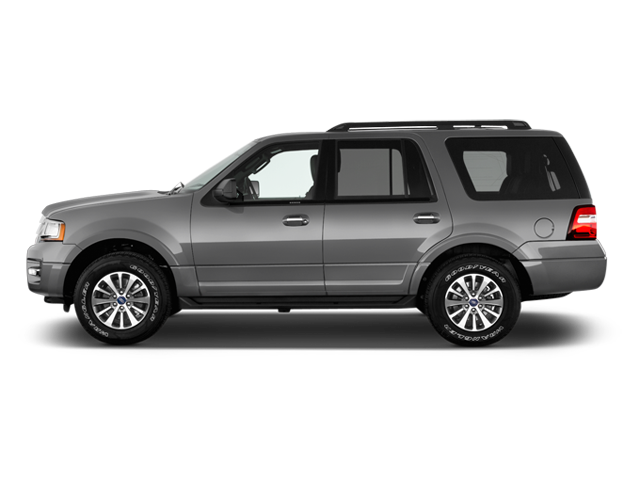
Ford's programmable MyKey system is standard. It allows owners to specify maximum speed limits and stereo volumes for secondary drivers (teenagers or valets, for instance). Rear parking sensors and a rearview camera are also standard across the board, and the Limited and King Ranch also have front sensors. A blind-spot monitoring system is standard on the King Ranch and Platinum trim levels and optional for the others.
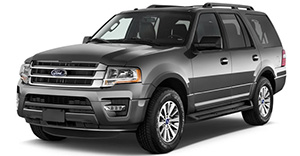
In government crash testing, the Expedition received a top five-star rating for overall protection, with a five-star rating for both frontal and side-impact protection.
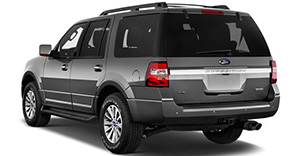
The 2017 Ford Expedition is a full-size, body-on-frame SUV with four available trim levels: XLT, Limited, King Ranch and Platinum. All four trim levels are available in standard and extended-length (EL) body styles and can be had with two- or four-wheel drive. The EL Expeditions are 15 inches longer overall. Regardless of body style, there is standard seating for eight passengers, while optional captain's chairs for the second row reduce passenger capacity to seven.
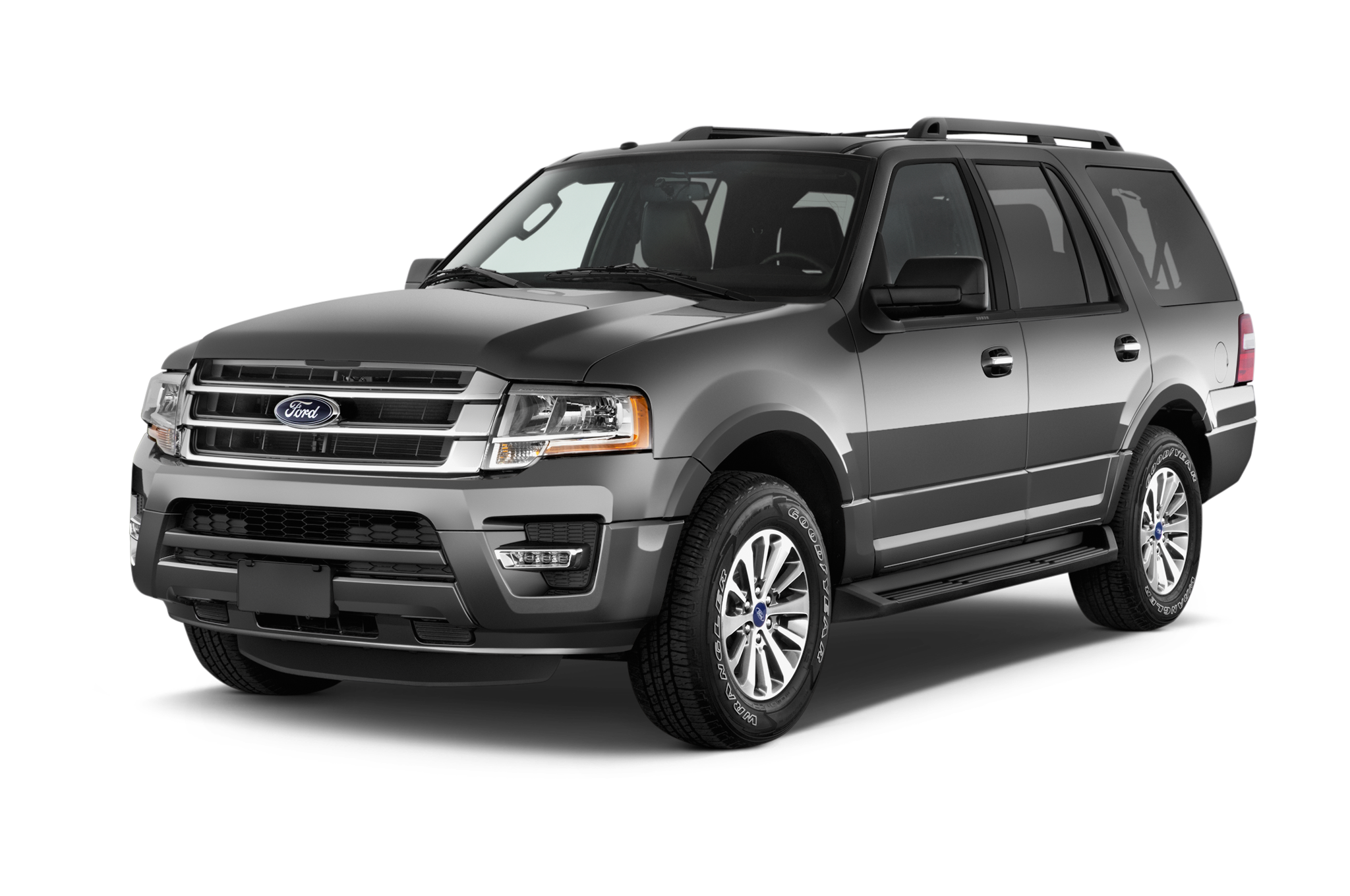
Standard equipment on the XLT includes 18-inch alloy wheels, automatic headlights, LED foglights, running boards, a roof rack, rear parking sensors, a rearview camera, heated mirrors with puddle lamps, air-conditioning, a six-way power driver seat with manual recline, power-adjustable pedals, a sliding and reclining 40/20/40 split second-row seat and a one-touch 60/40 fold-flat third-row seat. There's also a leather-wrapped manual tilt-and-telescoping steering wheel, an auto-dimming rearview mirror, Ford's Sync voice-control system, a 4.2-inch screen, Bluetooth phone and audio connectivity and a six-speaker sound system with CD player, satellite radio, USB interface, auxiliary jack and rear audio controls.
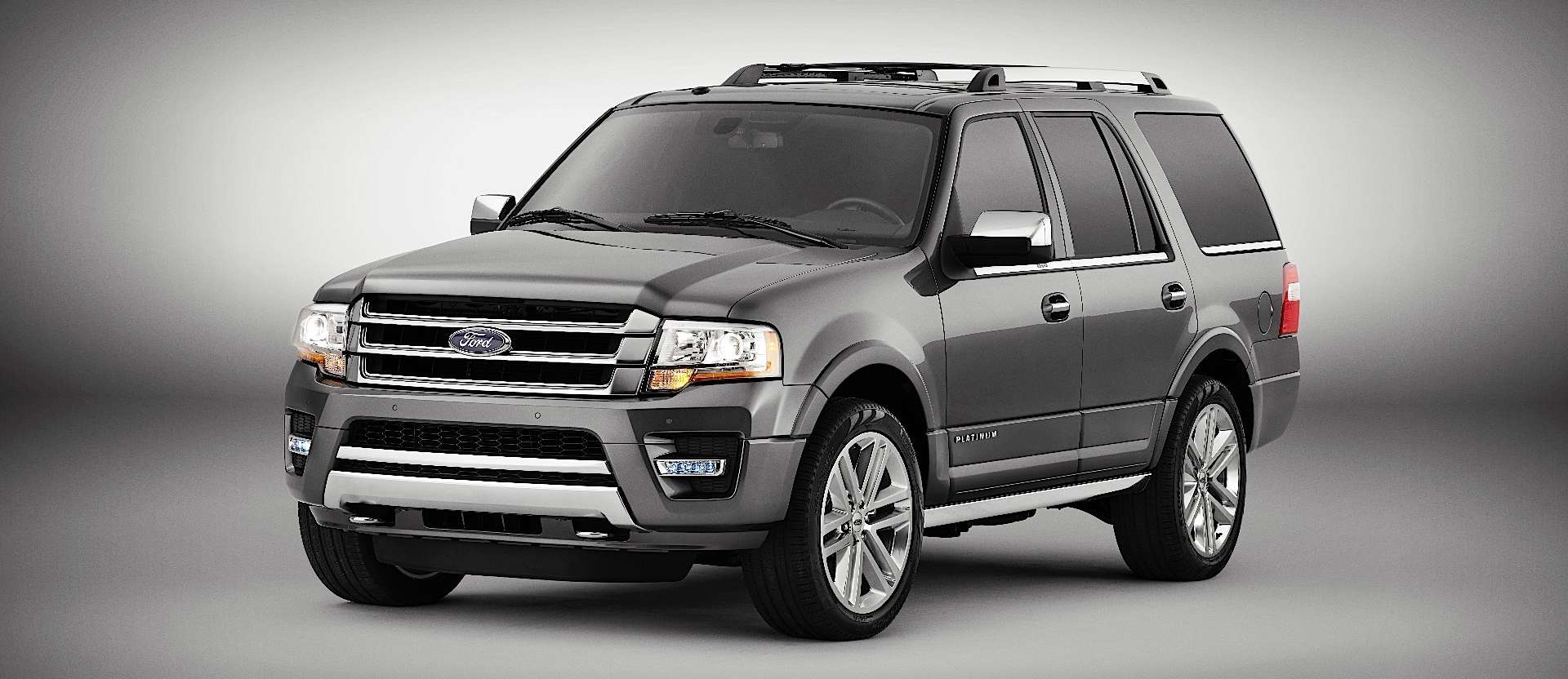
Two options packages are available for the XLT: 201A and 202A. The 201A package adds a power liftgate, leather upholstery for the first- and second-row seats (the third row has vinyl), a 10-way power driver seat (with power lumbar), a six-way power front passenger seat and a power-folding third-row seat.
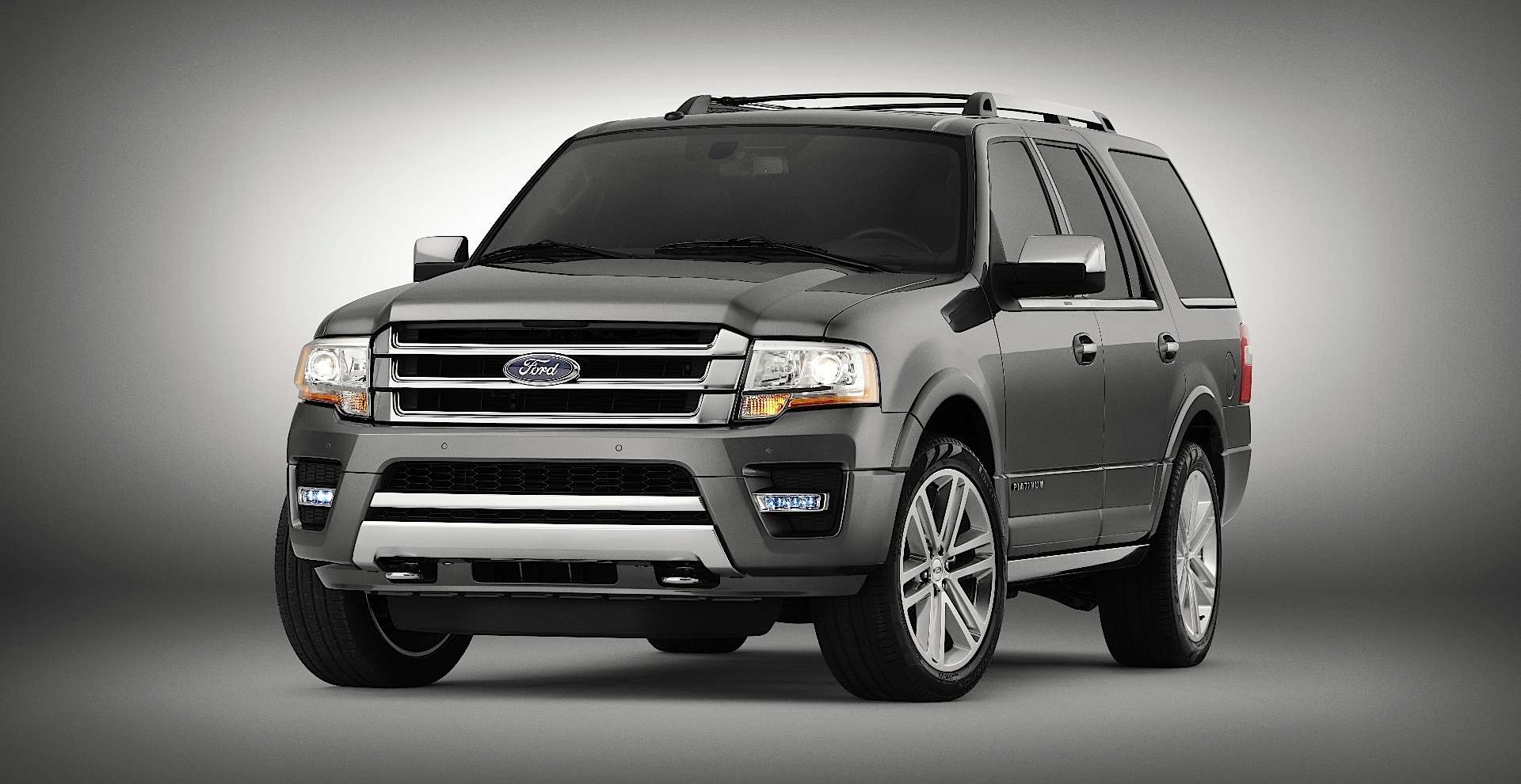
The 202A package gets those items plus a heavy-duty trailer tow package, remote ignition, dual-zone automatic climate control, a 110-volt household-style power outlet, a 10-way power front passenger seat, heated and ventilated front seats, driver memory settings, a power tilt-and-telescoping steering wheel and the Sync 3 interface with an 8-inch touchscreen and HD/satellite radio.
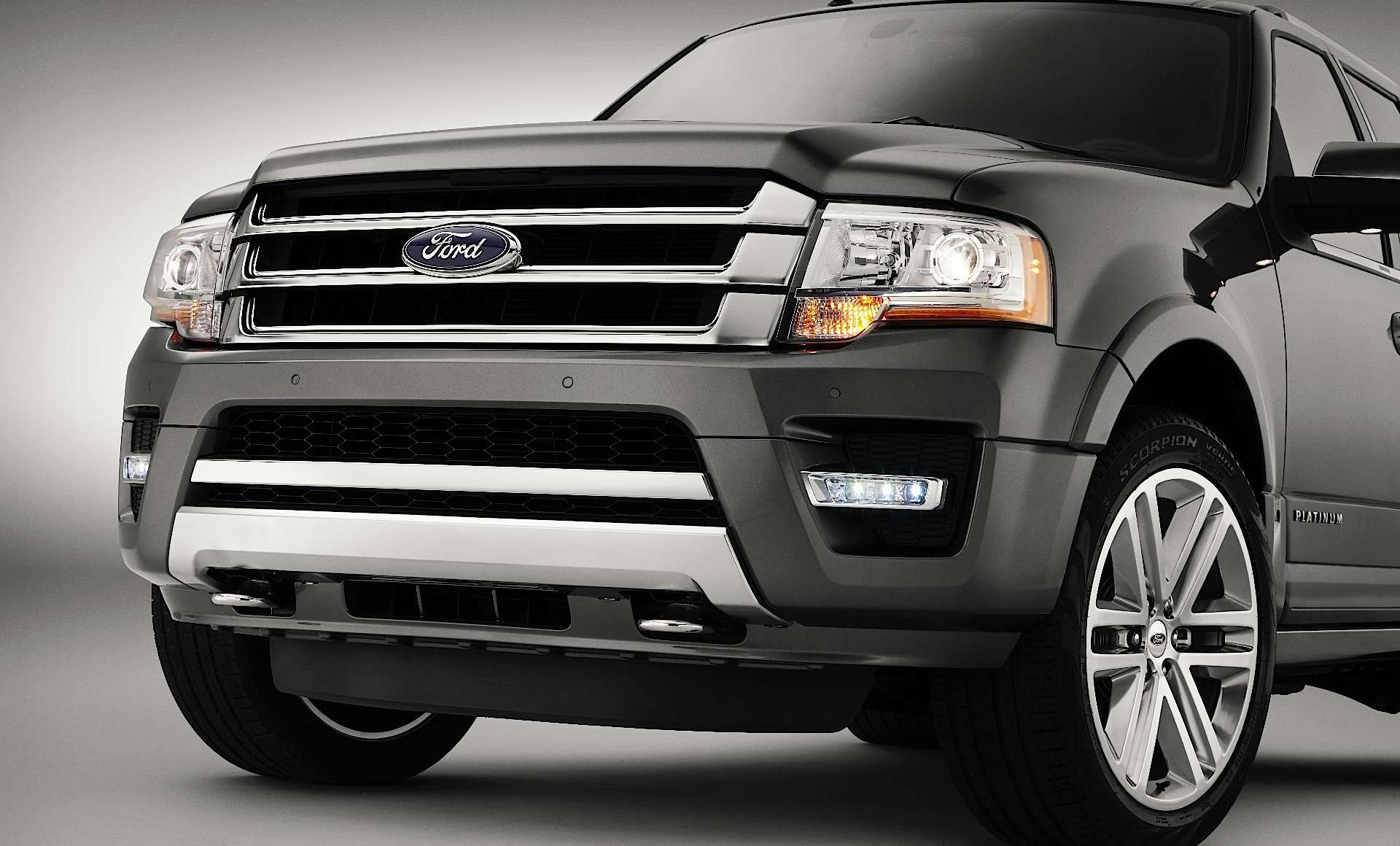
The Limited trim gets all of 202A's equipment plus 20-inch wheels, front parking sensors, power-folding mirrors (with a driver-side auto-dimming mirror), automatic wipers, heated second-row seats and an upgraded 12-speaker Sony audio system. Get the Limited trim with the 301A Package and you'll add a sunroof, retractable running boards and a voice-activated navigation system.
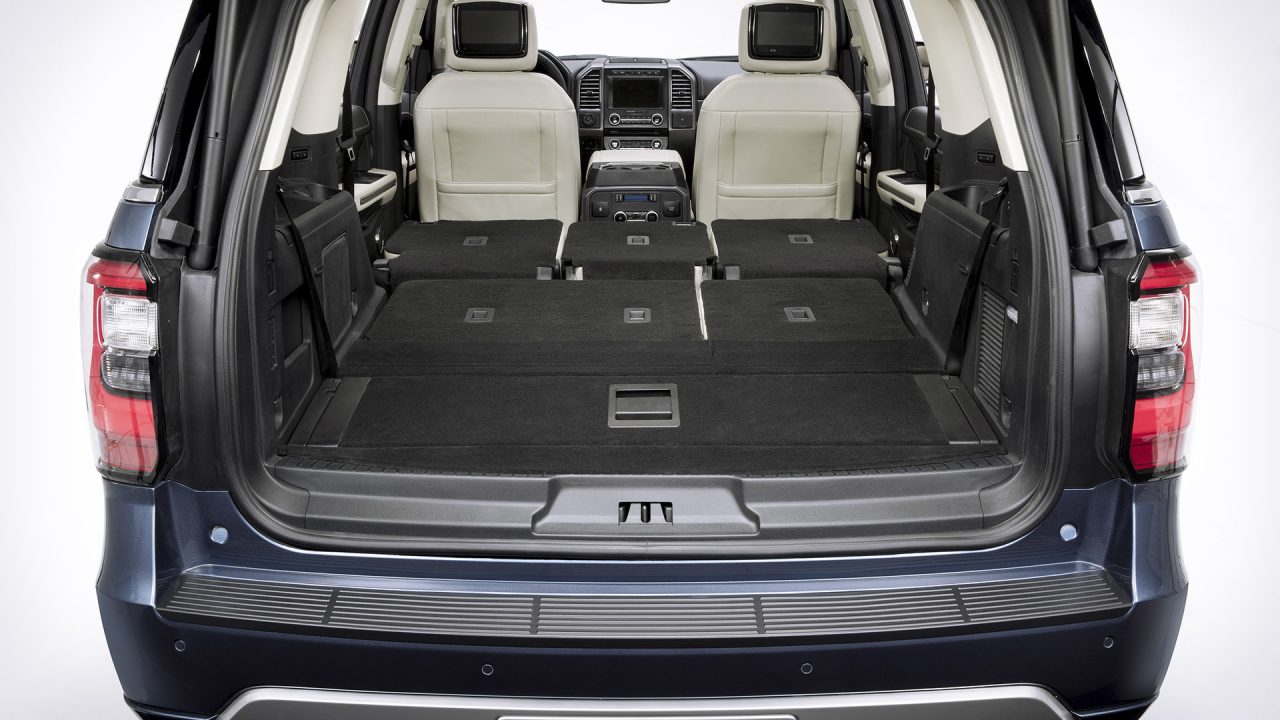
The Western-chic King Ranch Edition is equipped similarly to the Limited, but has special two-tone paint, special exterior styling details, a blind-spot monitoring system, premium leather upholstery and wood grain interior trim. The Platinum is similarly equipped to the King Ranch, but without the Western theme. It also gets 22-inch wheels and a sunroof as standard.

Stand-alone options for the 2017 Expedition, depending on the trim level, include many of the items in the prepackaged equipment groups, plus a load-leveling rear suspension, adaptive suspension dampers, second-row captain's chairs, power retractable running boards, a dual-screen rear seat video entertainment system and a 3.73 limited-slip rear axle.

Each 2017 Ford Expedition is powered by a turbocharged 3.5-liter V6 that makes 365 horsepower and 420 pound-feet of torque. A six-speed automatic transmission is standard, as is rear-wheel drive. But buyers can opt for four-wheel drive with low-range gearing. Properly equipped, the Expedition has a maximum tow rating of 9,200 pounds.
EPA estimates for the standard-length Expedition check in at 18 mpg combined (15 mpg city/22 mpg highway) with rear-wheel drive, or 17 mpg combined (15 city/20 highway) with 4WD. Going for the EL versions drops those numbers by about 1 mpg. On our 120-mile evaluation driving route, we matched the EPA's 17 mpg combined estimate in a 4WD Expedition.
Although it is a bit of a behemoth, the Expedition is still one of the quickest vehicles in its class. At the test track, a 4WD Expedition EL accelerated from zero to 60 mph in just 6.5 seconds.
Despite its significant size, the Ford Expedition is pretty manageable on the road. The four-wheel independent suspension gives it an exceptionally smooth ride relative to rivals. Similarly sized SUVs with live-axle rear suspensions are much stiffer. Opting for the Expedition's three-way adaptive dampers makes its excellent manners even better. Precise and responsive steering also contributes to an easy-to-drive nature. As with pretty much every vehicle that's this big, the Expedition's considerable bulk makes it a handful in tight spaces and crowded parking lots.
Even though it's up against competitors with big V8's under the hood, the Expedition is one of the quickest cars in the class. The turbocharged V6 engine is surprisingly well suited for this big SUV with plenty of power to pull it up long grades, even when it's fully loaded or pulling a reasonably sized trailer. The turbocharger doesn't delay acceleration, nor does it make you miss the old, thirsty V8.
Inside, the 2017 Ford Expedition is classy and roomy. The Limited, King Ranch and Platinum models are especially well-trimmed and attractive, but there are some low-budget surfaces that don't fit the upscale cabin theme. Sync 3 has replaced the old MyFord Touch touchscreen that we've lamented in the past and overall, it's a big upgrade. The graphics aren't as pretty but functionally, it's much easier to learn and use, especially when you're pairing with your smartphone.
A couple of years ago the Ford Expedition bucked its large and thirsty V8 engine, and became a better vehicle for it. Though it has two less cylinders than the Chevy Tahoe, the Ford's engine is more powerful thanks to its twin turbocharging. As big as the Expedition is, this relatively small (3.5-liter) powerplant easily gets Ford's full-size SUV up to speed. Handling is far from nimble -- remember this is a big, truck-based utility vehicle -- but the available electronically controlled shock absorbers do help smooth the ride and give the driver the flexibility of three different driving modes: Comfort, Normal and Sport. Given the largesse of the Expedition -- and especially the even longer Expedition EL -- we recommend the available blind-spot monitoring system. Unlike the Tahoe, the Expedition lacks active safety and driving aids like lane-keep assist, automatic emergency braking and active cruise control.
ECOBOOSTThe days of the giant, fuel-thirsty V8 are numbered; at least, they are over at Ford. The Expedition's 3.5-liter V6 puts out more power and torque than the previous 5.4-liter V8, yet maintains the same towing capacity and delivers better fuel economy.SYNC 3The latest edition of Ford's touch-based information/entertainment system has rectified past wrongs that included too-small type and lagging response time. For 2017 it further improves with Apple CarPlay and Android Auto smartphone compatibility.
All 2017 Ford Expeditions have three rows of seats and can accommodate up to eight passengers. Optional bucket seats in the second row in lieu of the standard 3-person bench reduce capacity to seven. Both the standard Expedition and the extended-length EL have the same amount of legroom for passengers, including an adult-friendly 37.7 inches for those in the third row. The big difference -- literally -- is cargo capacity behind the third row. In standard models there's 18.6 cubic feet. EL models boast a whopping 42.6. Fold the second and third rows, and those numbers grow to 108.3 and 130.8, respectively.
For 2017 the Ford Expedition retains its classic, boxy shape that puts an emphasis on cargo capacity and utility. You won't find much to swoon over here in the style department, but that's not the point. What you'll find is a big, brawny, slab-sided SUV with a stately but not over-the-top grille and large windows. The extended-length Ford Expedition EL supersizes matters. Where the standard Expedition models are already long at 206 inches in length, the EL variants come in at 220.8 inches. If you plan to park either in your garage, measure first.
The 2017 Ford Expedition comes in four trims: base XLT, Limited, King Ranch and the range-topping Platinum. Spend the least on a 2017 Expedition XLT and you'll get 6-way-power driver's seat, power-adjustable pedals, leather-wrapped steering wheel, rearview camera and rear parking sensor, and 6-speaker AM/FM/CD audio with Bluetooth wireless connectivity and USB port. We find a solid value in the Limited model, which adds leather interior, dual-zone climate control, heated/cooled front seats, power liftgate, the Sync 3 system, driver's seat memory and power-folding 3rd-row seats. The King Ranch adds more leather, blind-spot monitoring, navigation system, power-deployable running boards and exterior chrome accents.
The range-topping Expedition Platinum is a luxury liner loaded with amenities like micro-perforated leather seats, power moonroof, leather-and-wood console, stainless-steel running boards, and 22-inch wheels. All models can be had with 4-wheel drive instead of the standard rear 2-wheel-drive (2WD) layout. Optional on base XLT models and standard on the rest is a tow package that increases towing capacity from 6,600 pounds to 9,200. Other options vary by trim and include navigation, moonroof, 2nd-row bucket seats and Sony premium audio system.
For the 2015 model year, Ford created a new front end for the Ford Expedition, which now featured redesigned headlamps, a restyled grille and LED fog lamps.
Henry Ford started the company in 1902 with $ 28,000 in cash from twelve investors, among which were John and Horace Dodge, who would later found the Dodge Brothers Motor Vehicle Company. He was 40 years when he first established the company's first factory on Bagley Street, Detroit.
He would later incorporate the firm on June 16, 1903. Ford Motor Company would go on and label their models chronologically in alfabetical order, starting with the Model A to the Model K and Model S, which was Ford's last right-hand steering vehicle. Then, in 1908 Ford introduced the Model T, which was designed by Childe Harold Wills and two Hungarian immigrants, Joseph A. Galamb and Eugene Farkas. This model proved to be of quintessential Ford vehicle, placing the company among the most influential automotive brands in history.
The Ford Model T was reliable, practical and affordable, which made it a big hit in the US, where it was advertised as the middle-class man's vehicle. The car's success compelled Ford to expand his business and layout the basics of mass production principles in 1913 with the introduction of the world's first vehicle assembly line. By 1912, production figures for the Model T alone reached nearly 200,000 units.
This organizational innovation brought in the vehicle construction field allowed Ford to reduce chassis assembly time by as much as 10 hours, dropping from 12 ½ h to 2h 40 min.
Besides ensuring the efficiency of the production process, Ford turned his company into an interactive entity by announcing a new profit-sharing policy. This would grant buyers a cut of profits if sales reached 300,000. As expected, sales effortlessly reached the 300k threshold and went even further to hit a record 501,000 in 1915.
As part of a new set of financial tactics, Ford provided working places for the disabled who otherwise had a hard time finding a job, reduced work shifts and doubled all employee's salaries. Changes like these sparked a tremendous sales increase while also setting the base of modern working conditions.
Still, the US and Canadian market would prove to be too small to fit Ford's plans. By the mid 20's, the Ford label had crossed the ocean and reached England, France, Germany, Denmark, Austria as well as distant Australia. The company's activity on European grounds further helped the brand's revenue growth.
War would not shake the Ford company as bad as other car makers. Post WWI improvements include the introduction of four-wheel brakes and a series of new vehicle releases to match new consumer demands. In 1922 Ford entered the luxury car segment with the acquisition of the Lincoln Motor Company, named after Abraham Lincoln whom Henry Ford admired.
Ford Motor Co. was one of the few big American corporations to survive the Great Depression, although the plummeting automotive sales led the company to scale down its operations and lay off many workers. In May 1929, Ford Motor Co. signed an agreement with the Soviet Union to provide technical assistance until 1938 to construct an integrated automobile-manufacturing plant at Nizhny Novgorod, in exchange for the Soviets purchasing $ 13 million worth of automobiles and parts. Under this agreement many American engineers and skilled auto workers went in 1932 to work on the Gorkovsky Avtomobilny Zavod (GAZ), or Gorki Automotive Plant. The few who remained in the Soviet Union after the completion of the plant fell victims to Stalin's Great Terror, ending either shot or exiled to Soviet gulags.
With the arrival of WWII Ford increased its influence on the global stage becoming an active player in the war effort, a thing underlined by US President Franklin Roosevelt referring to Detroit as the "Arsenal of Democracy." When the US War Department handed production of B-24 Liberator airplanes to Ford, the output rose to 20 airplanes per day instead of only one per day managed by the Consolidated Aircraft Corporation.
After WWII Ford continued its passenger vehicle operations and in 1955 introduced the iconic Thunderbird model. Then it introduced the Edsel brand in 1958, which proved to be a failure and was dissolved in 1960. Part Edsel's failure as an automotive brand resided in the onset of the 1957 recession in the States and the vehicle's high price tag.
Ford Motor Co. managed to get back up from its Edsel failure with the introduction of the Falcon model in 1960 and the Mustang in 1964. The company's next major step was represented by the formation of Ford Europe division in 1967.
Ford plunged into a state of brand-fatigue that would bring the company to the point of near bankruptcy. Following major sales losses in the 2000's, Ford was pinned against the wall by debts and the imminence of closing down.
Preferring to make it back on its own, Ford mortgaged all of its assets in 2006. As of then, the company has releases a variety of new models both under the Ford brand name and the rest of the sub-brands it owns such as fresher and edgier Mercuries and flashier Lincolns, Ford's luxury division. Business in Europe has also been good for Ford, especially after the introduction of the Focus model in 1997 and although it hasn't fully recovered, it's definitely on the way to regaining popularity.
2017 Ford Expedition Top Speed
Source: https://www.mycarspecs.com/car/2017-ford-expedition-base-xlt







Tidak ada komentar:
Posting Komentar